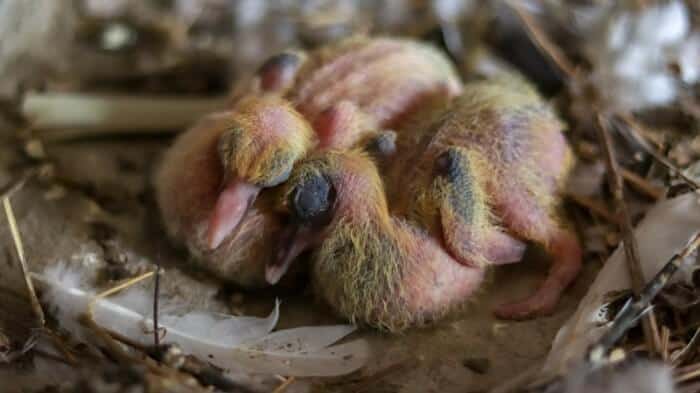

When the baby pigeons start to develop the ability to move, which is around the time that their feathers start to resemble that of an adult pigeon, they need a larger space than that of their original nesting place. Doing this procedure is the only way to permanently identify your pigeon as he grows up. Slipping the band over the little foot at this point is painless and during this stage the baby pigeon grows so fast that the band is not likely to fall off. Those who wish to band their pigeons need to do so around the first week of life. The feeding process is relatively simple as the pigeon milk is poured directly down the young bird’s gullet from the parent’s beak. This is a mixture of regurgitated food and water delivered by the parents in the same fashion that most bird parents feed their young. In man made nesting areas it is vital that the nest doesn’t restrict movement but protects the squab from an accidental spill out of the nest.īaby pigeons rely on “pigeon milk” for nourishment after their resting period. Once the eyes open, however, many baby pigeons are ready to start moving about. Without warmth, the body loses too much energy and the little squab simply can’t recover from his fight to enter the world.ĭuring the first several days the baby pigeon’s eyes remain closed and the squab remains relatively quiet in the nest. The leading cause of death among baby pigeons is temperature related. However, the need for warmth is paramount. There is no need to worry about feeding the baby pigeons in the first day or two after the hatching struggle, as the need for rest after such an enduring experience is greater than the need for food. While they are born with damp down, even as it dries it does little to offer the little guys any real warmth. Of course, as they grow up they will adapt a more visually appealing body.īaby pigeons require a vast amount of high quality care, especially if they are devoid of a natural mother. Once their damp downy little bodies emerge, the baby pigeon is considered to be one of the least attractive of baby birds, with large awkward eyes and almost thin floppy neck. Those who raise baby pigeons need to allow the little squab to work their own way out of the egg, as the fight for freedom is a healthy part of their body’s development and any interference can cost them their life. Baby pigeons, normally called squabs, require about 24 hours to peck and wiggle their way out of their egg.


 0 kommentar(er)
0 kommentar(er)
